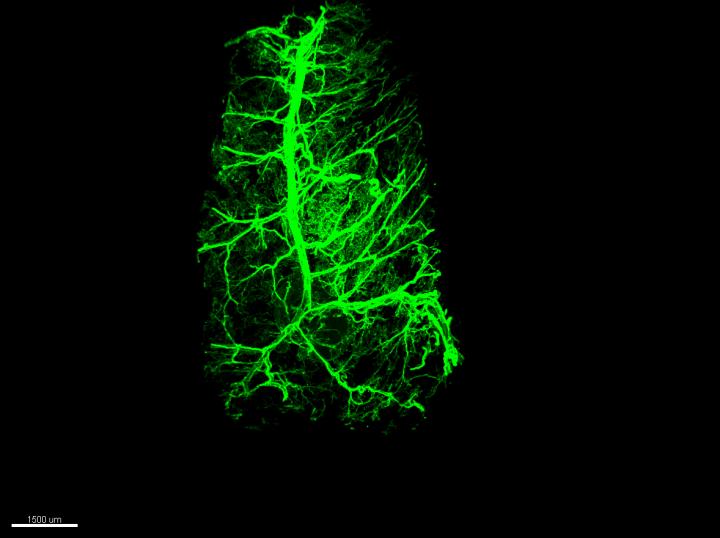Yet the biology underlying the breakdown of stored fat molecules is not well known. A new paper posits that nerves embedded in fat tissue have previously unrecognized capability. If they receive the right signal, they have an astonishing capacity to grow. At least in mice.
Don't get excited that this will soon be a claim in a supplement bottle or a diet book. That is certain to happen, but science does not work that way. Mice are not little people so these studies should always be placed in the "exploratory" category no matter what someone selling something claims.

Neurons in white fat, which stores calories, grew back after treatment with leptin.
Credit: Laboratory of Molecular Genetics at The Rockefeller University
The signal is the hormone leptin released by the fat cells themselves. Discovered in 1994, the hormone relays signals between fat deposits and the brain, allowing the nervous system to curb appetite and boost energy expenditure to regulate body weight. Most obese people produce high levels of leptin, and show a diminished response to hormone injections, suggesting that their brain is resistant to the hormone. Thus, bypassing leptin resistance could have a therapeutic benefit for these patients.
In experiments with mice, the researchers found that the normally bushy network of neural fibers within fat tissue shrinks in the absence of leptin and grows back when the hormone is given as a drug. These changes were shown to influence the animals' ability to burn the energy stored in fat. If confirmed in humans, the findings could advance research on obesity and related diseases by perhaps spurring research in new treatments that target neurons in fat.
When mice are genetically engineered to stop producing leptin, they grow three times heavier than normal mice. They eat more, move less, and cannot survive in what should be tolerable cold because their body can't properly utilize fat to generate heat. Give these mice a dose of leptin, however, and they quickly begin to eat less and move more.
Yet when the researchers treated them longer, for two weeks, more profound changes occurred: the animals started to break down white fat, which stores unused calories, at normal levels, and regained the ability to use another form of fat tissue, brown fat, to generate heat.
It was this slower change that interested the researchers, who suspected that changes in neurons outside the brain--those that extend into fat--might explain why this part of the response to leptin took some time.
Using an imaging technique to visualize nerves inside fat, the researchers traced leptin's effects on the fat-embedded neurons up to the brain's hypothalamus region. From here, they found, leptin's growth-promoting message travels via the spinal cord back to the neurons in fat. "This work provides the first example of how leptin can regulate the presence of neurons in fat, both white and brown," adds Cohen.
Through this pathway, fat appears to be telling the brain how much innervation it needs to function properly. "Fat is indirectly controlling its own innervation and thus function," says co-author Jeffrey M. Friedman, a molecular geneticist at The Rockefeller University. "It is an exquisite feedback loop."





Comments